Effective
verbal communication
Communicating
effectively requires using all forms of classroom talk in combinations
appropriate for particular utterances and interactions. In various places
earlier in this book, we have s
Effective
content talk
In
Chapter 8, for example, we suggested ways of talking about content so that it
is most likely to be understood clearly, but in that chapter we described these
as instructional strategies. In explaining ideas, for example, whether briefly
or as a extended lecture, we pointed out that it helps to offer, in advance,
organizing ideas, to relate new content to prior knowledge, and to organize and
elaborate on new information. In the same chapter, we also suggested strategies
about content talk intended for students, so that students understand their own
thinking as well as possible. We especially highlighted two ways of learning:
inquiry learning and cooperative learning. Table 18summarizes instructional
strategies both for students and for teachers, and indicates how they
contribute to effective verbal communication about content.
Table 18: Strategies
for supporting content talk
|
Content talk
by teachers
|
|
|
|
Strategy
|
Definition
|
How it helps
communication
|
|
Using advance
organizers
|
Statements or
ideas that give a
concise
overview of new material
|
Orients
students’ attention to
new ideas
about to be learned;
assists in
understanding and
remembering new
material
|
|
Relating new
material to prior
knowledge
|
Explicit
connections of new ideas
to students’
existing knowledge
|
Facilitates
discussion of new
material by
making it more
meaningful to
students
|
|
Elaborating
and extending new
information
|
Explanations
of new ideas in full,
complete terms
|
Avoids
ambiguities and
misunderstandings
about new ideas or concepts
|
|
Organizing new
information
|
Providing and
following a clear
structure when
explaining new
material
|
Assists in
understanding and
remembering
new material
|
|
Content talk
by students
|
|
|
|
Inquiry
learning
|
Students
pursue problems that
they help to
formulate for
themselves
|
To formulate
and and investigate
a problem,
students need to express
clearly what
they wish to find out.
|
|
Cooperative
learning
|
Students work
in small groups to solve a common problem or task
|
To work
together, students need to explain ideas and questions to
fellow
students clearly
|
Table 19: Major
strategies of effective procedural and control talk
These strategies are
also discussed in Chapter 7 as features of classroom management, rather than of
communication. Note, too, that the difference between procedural and content
talk is arbitrary to some extent; inmany situations one kind of talk serves the
needs of the other kind.
|
Strategy for
procedural talk
|
Strategy for
control talk
|
|
Creating and
discussing procedures for daily routines
|
Creating and
discussing classroom rules of
appropriate
behavior
|
|
Announcing
transitions between activities
|
Clarifying
problem ownership
|
|
Providing
clear instructions and guidance for
activities
|
Listening
actively and empathetically
|
|
Reminding
students periodically of procedures for
completing a
task
|
Using
I-messages
|
Effective
procedural and control talk
In
addition to communicating about content, teachers need to communicate
procedures and expectations about appropriate classroom behavior. In Chapter 7
we described quite a few ways to communicate with students about these matters,
though, in that chapter we did not refer to them as methods of communication,
but as methods of classroom management, of creating a positive learning
environment, and of resolving conflicts in the class. Table 19 summarizes
several of the major strategies described in that chapter.) By framing
communication in these ways, we called attention to their importance as forms
of communication. As we pointed out, procedural talk and control talk matter
are used in teaching simply because clear procedures and appropriate classroom
behavior are necessary
REFERENCE
Educational
Psychology,Second Edition
,Kelvin Seifert and Rosemary Sutton
Copyright ©
2009 Kelvin Seifert

















Social Plugin